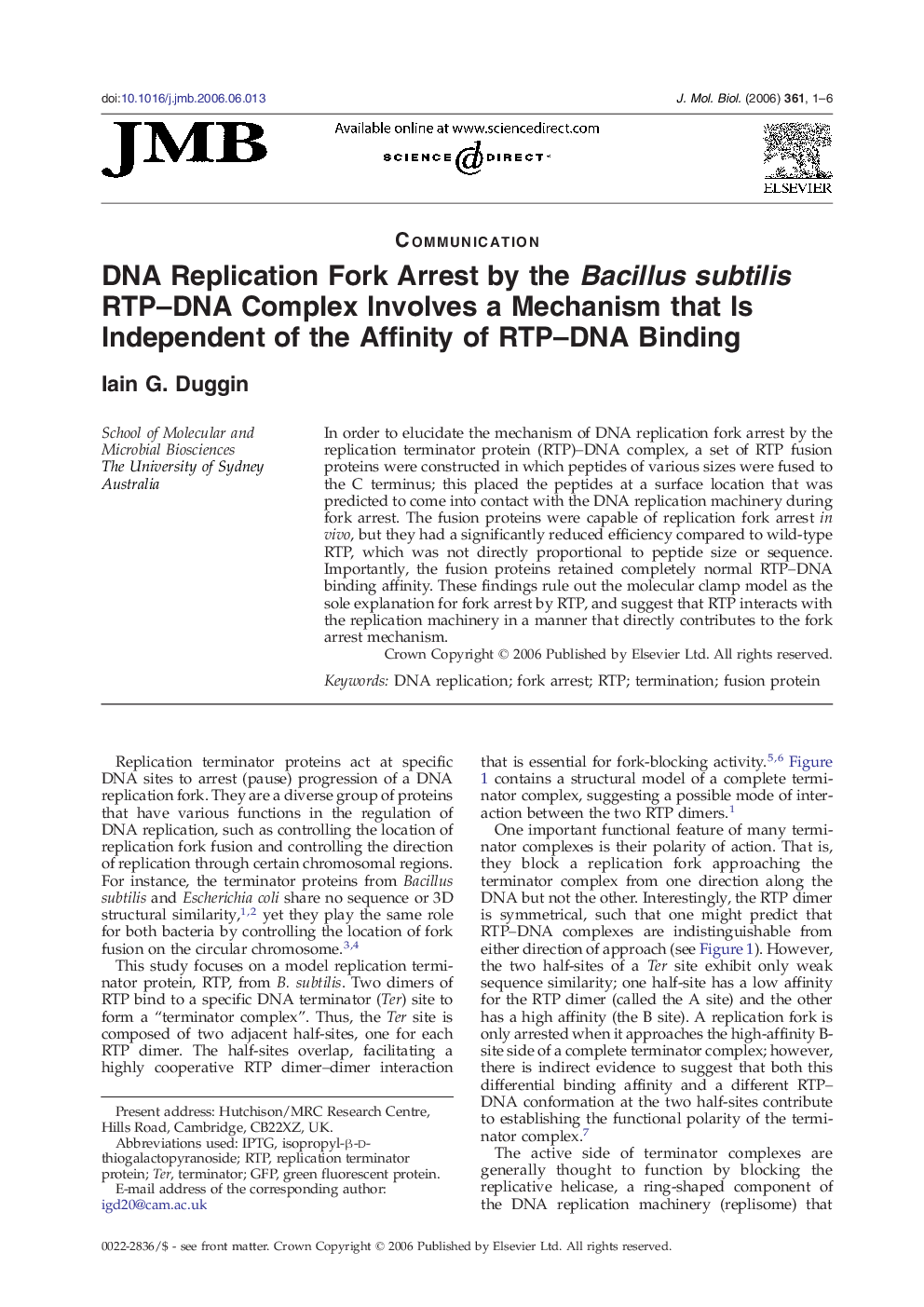| Article ID | Journal | Published Year | Pages | File Type |
|---|---|---|---|---|
| 2188977 | Journal of Molecular Biology | 2006 | 6 Pages |
In order to elucidate the mechanism of DNA replication fork arrest by the replication terminator protein (RTP)–DNA complex, a set of RTP fusion proteins were constructed in which peptides of various sizes were fused to the C terminus; this placed the peptides at a surface location that was predicted to come into contact with the DNA replication machinery during fork arrest. The fusion proteins were capable of replication fork arrest in vivo, but they had a significantly reduced efficiency compared to wild-type RTP, which was not directly proportional to peptide size or sequence. Importantly, the fusion proteins retained completely normal RTP–DNA binding affinity. These findings rule out the molecular clamp model as the sole explanation for fork arrest by RTP, and suggest that RTP interacts with the replication machinery in a manner that directly contributes to the fork arrest mechanism.
